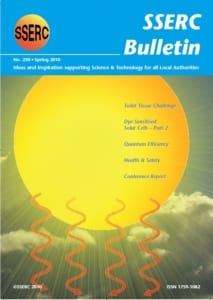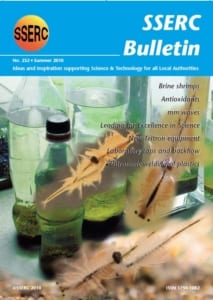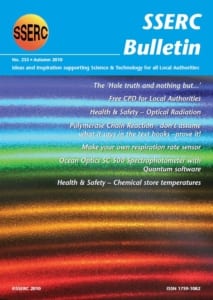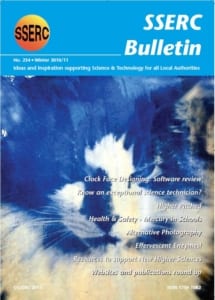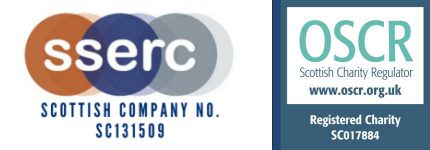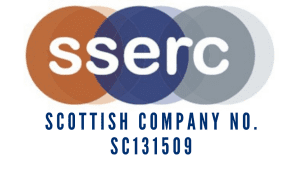This practical addresses the problems associated with poor hand hygiene in a fun way, with a definite ‘eaugh-yuk’ factor which we hope will appeal to teenagers, while getting across a very important message.
Review of the SSERC Conference and AGM, held in the Carnegie Conference Centre in Dunfermline at the end of November.
Counting photons – After several calls for help from teachers of AH students who had been trying to measure the power of a laser by irradiating a thermistor and looking for a change in resistance we thought surely there must be a better way with equipment that’s readily available or components that are inexpensive. So we thought of photodiodes and came to see that this is a good way of consolidating quantum theory with classical effects. Here is a method for counting the photons in visible radiation.
Dye Sensitised Solar Cells Part 2
Following on from the last article, which described the Man Solar kit which can be used to produce dye-sensitised solar cells (DSSCs), this part describes some of the results obtained when various natural dyes were tested as photon-receptors, and the pH dependency. It also looks at the regeneration of the electrodes, and describes how to produce new titanium dioxide coated electrodes. Lastly there are suggestions of where this new technology could be incorporated within the 3-18 framework.
Health and Safety
Brief notes on . .
- Unsafe chargers
- Workplace first-aid changes
- Gas Safe Register taking over the statutory gas registration scheme in Great Britain from CORGI.
- Drinking of water in labs
- New AV installation specification
Here we look at a method for examining the factors that affect the voltage induced across a coil by a moving magnet. Schools are likely to have most of the necessary equipment for these activities. We see the potential for an Advanced Higher investigation here; indeed a student from an Edinburgh secondary school visited SSERC to carry out the experiments detailed.
A review of the Pasco SPARK datalogging system
Information on courses that we will be running in partnership with Research Councils UK, following an agreement between SSERC and the National Science Learning Centre. These courses bring teachers and researchers together to promote contemporary, exciting science in the classroom.
Tackling big issues (Let’s Talk)
Let’s Talk is an initiative, funded by the AstraZeneca Science Teaching Trust and the Wellcome Trust, which aims to encourage Scottish primary and early secondary school pupils to discuss important health related science issues. Let’s Talk sets out to provide young people with the knowledge and skills that will serve them in the future to evaluate both the choices on offer and the messages that accompany them.
Health and Safety
An introduction to the new Globally Harmonised System (GHS) for packaging and labelling of chemicals, implemented in the UK by the Classification, Labelling and Packaging (CLP) Regulations.
We have recently revised our guidance on the use of lasers by pupils. Previously, we had said that certain lasers could be used by pupils in S3 and above. Much more is now known about lasers and their associated hazards. We therefore feel that we can extend their use to S1 and S2. Thus, all secondary pupils may work with lasers.
Ultrasonic welding of plastics
A brief guide to ultrasonic welders which can spot weld and seam weld any plastic material in seconds and are just becoming available for educational use.
Here we look at four of the latest Teltron Tubes for use in the physics laboratory: the Perrin Tube, Thomson Tube, Electron Diffraction Tube and the Dual Beam Tube. All the tubes examined incorporate electron-gun assemblies contained within an evacuated clear glass bulb.
In order for pupils to be able to make a decision about whether they agree with the use of whole body scanners at airports or not they need to be informed about the properties of millimetre waves. SSERC recently hosted part two of their Physics Residential course and were delighted to welcome Dave McFarlane from the Millimetre Wave Group at St Andrews University to update teachers on their knowledge of mm waves and their uses.
CPD – Leading for Excellence in Science
Leading for Excellence in Science is SSERC’s response to supporting those with leadership responsibilities for science education in secondary schools. This course is aimed at all of those who have, or aspire to have, responsibility for leading science education in their establishments.
This article offers some suggestions and information for technicians and teachers to maximise the populations of brine shrimps in school. Although the basic information given in the Brine Date box is very useful and the set up information is easy to follow, we present a few extra hints and tips to ensure the brine shrimp tank is kept in prime condition.
An introduction to an interesting method for investigating antioxidant activity by looking at the perturbation of the oscillations in the fascinating Briggs-Rauscher reaction. Left alone the reaction cycles from colourless to yellow to a sudden blue about 15 times. Adding antioxidants at any point causes a delay in proportion to the antioxidant concentration/activity
Health and Safety
The Water Regulatory Advisory Scheme (WRAS), which is the UK water industry’s approval scheme, has recently issued further comments on laboratory taps. In this article, we attempt to interpret this advice for schools and colleges.
Ocean Optics Spectrophotometer
In Bulletin 228 we reviewed two relatively low cost USB spectrophotometers suitable for use in schools and suggested some activities that could be carried out using these devices. We have learned of another budget model, the SC-500, made by Ocean Optics for Scientific and Chemical.
A key date in the SSERC calendar is the Annual Conference and AGM which in 2010 will be held at the Carnegie Conference Centre, Dunfermline, on Friday 3rd December. A major theme for this year’s conference is the important and continuing role which SSERC plays in offering professional development for teachers, technicians and student teachers.
ElectroLycra’s resistance changes with length. It forms a branch of a Wheatstone Bridge and the change in length of the ElectroLycra is detected by measuring the off-balance voltage using a voltage sensor connected to a data logger.
We have previously described the development of a PCR protocol suitable for use in secondary schools and colleges. More recently our colleagues at the National Centre for Biotechnology Education (NCBE) have refined the protocol and made it available in the form of a self-contained kit. The current (July 2010) cost of the full kit from NCBE is £140. The PCR kit, as marketed by NCBE, allows students to extract chloroplast DNA from plants and identify possible evolutionary relationships between different species. What the protocol, as written, does not demonstrate is that increasing the number of amplification cycles during PCR will increase the amount of DNA present for staining in the electrophoresis stage. Clearly for PCR to work this increase in the amount of DNA present must be happening but we thought it would be both interesting and useful to have a protocol which could be utilised to show that this is the case. So, there is one key aim of the experiment we describe here – viz to show that an increase in the number of PCR cycles leads to an increase in the amount of DNA which can be observed.
When last did you change the speed on your pillar/pedestal drill? Have you settled for some mid-range speed in the hope that the drill copes with all drilling requirements? Have we lost the art of matching the correct drill speed to the drill diameter? Modern pedestal drills typically have 12 speeds ranging from about 180 rpm to 2740 rpm, this adequately covers the correct speeds for drilling ferrous, non ferrous metals, acrylics, hard and softwoods. But what is the correct speed for drilling materials found in school workshops taking into consideration the material, the drill type and drill diameter?
Health and Safety
Recently we have had an increasing number of queries about high temperatures in chemical stores and, whilst not questioning the reality of global warming, it seems there is more to the matter than the merely climatic. Although it is clear that modern schools are better insulated and thus provide warmer environments than used to be the case there would appear to be more to it than that.
The SSERC team has just finished drafting guidance to schools on using optical radiation safely. All common school sources are covered. Our advice is based on information in British Standards and from the Health Protection Agency’s work.
A roundup of various websites and print resources available from SSERC
Learning and Teaching Scotland has informed us that they are making resources available on line to support the new Higher science qualifications. Some of the materials have been developed with substantial input from SSERC. We look forward to having a good look at everything on offer when we have appropriate access.
An experiment on the Doppler Effect for the new Higher Physics qualification. Teachers have made it clear that the new content in the forthcoming course should be supported by practical work. Here we look at an experiment on the Doppler effect that could be used in the Cosmology part of the Our Dynamic Universe unit.
In this short article, we present an experimental protocol for the breakdown of hydrogen peroxide by catalase that we believe to be both robust and accessible and which, therefore, should prove useful in supporting the delivery of outcome SCN 4-13b. Further experimental details will be made available on the SSERC website.
Anyone who has designed a clock face using a CAD system would know the problems of firstly deciding a diameter for the dial, then constructing the 12 x 30° hour positions (showing off using polar coordinates!) deciding on the hour text/graphics then trying to obtain the correct position and so on. Now this process has become a lot easier thanks to Ekits Clock Designer Software (version 4). This costs £14.95 for a single copy, £49.95 for a site licence version.
An introduction to some alternative photography processes, especially the cyanotype: an iron based process which is both cheap and easy, not even requiring a darkroom.
Health and Safety
A number of issues relating to the use of mercury in schools have recently come to light and which need some clarification, which we attempt to provide.

